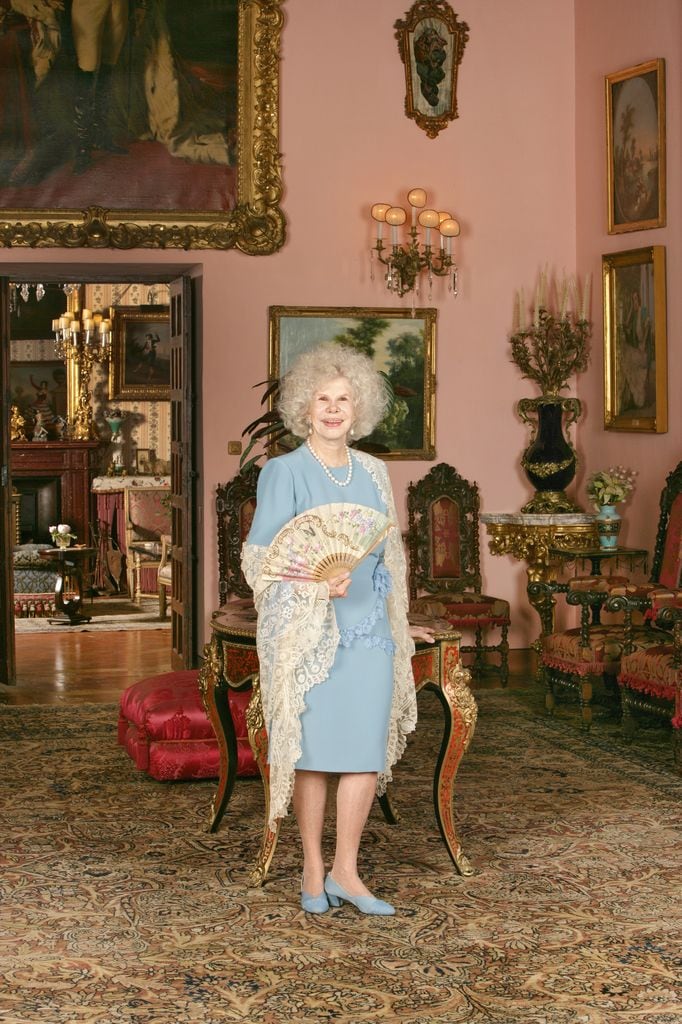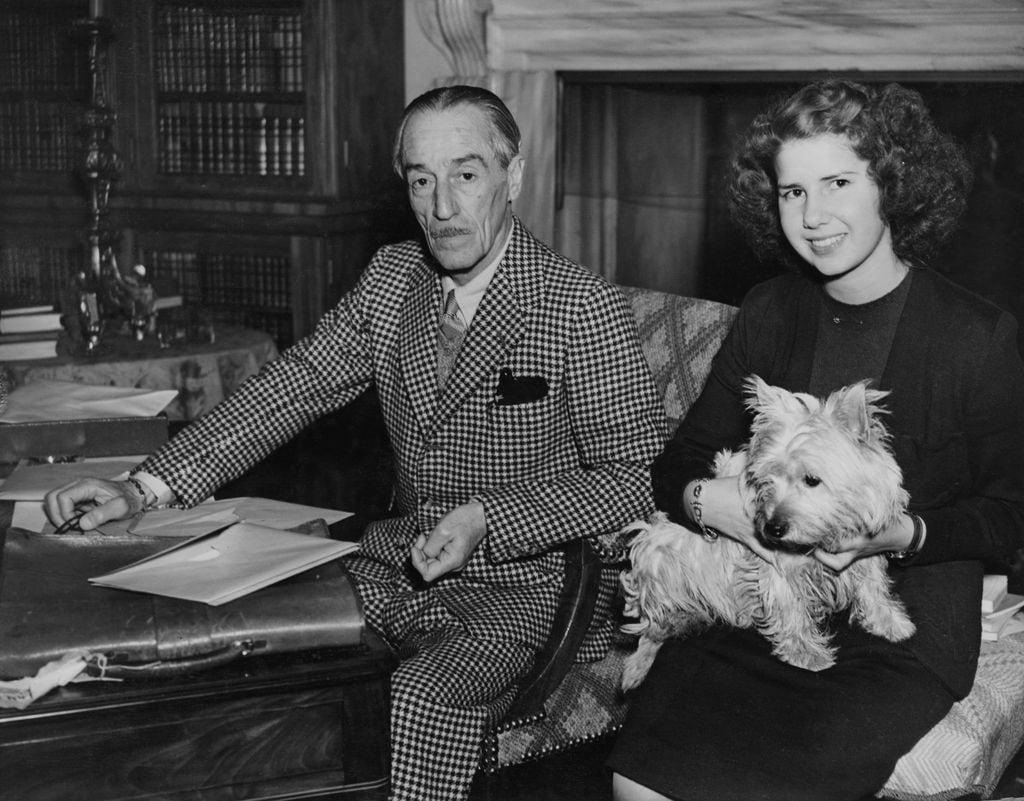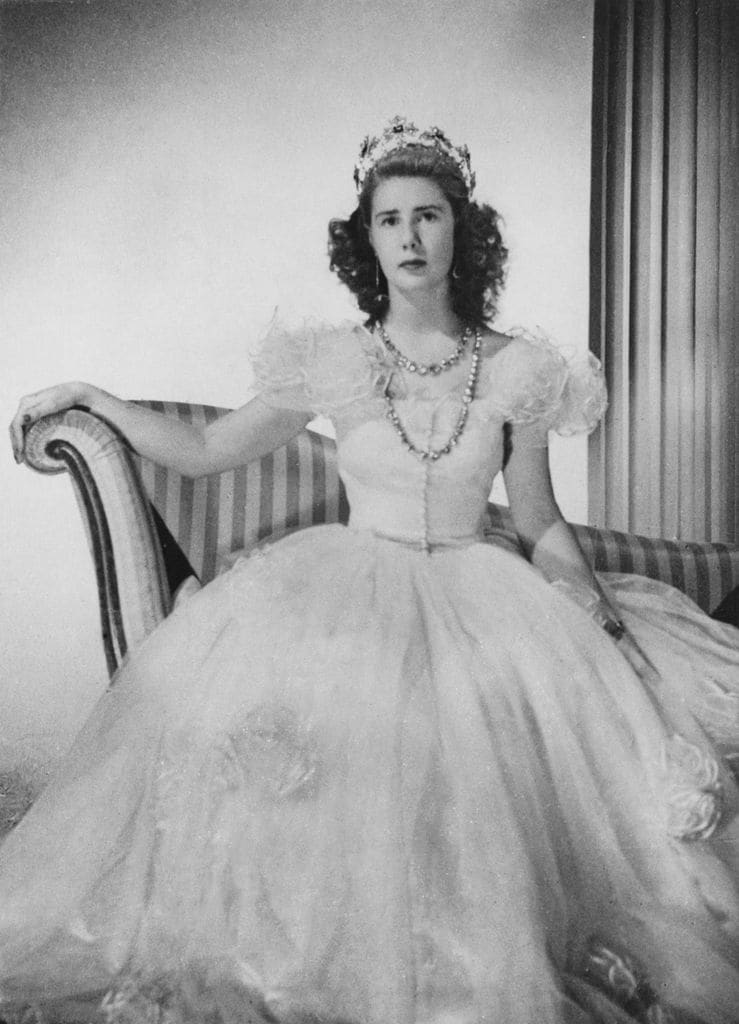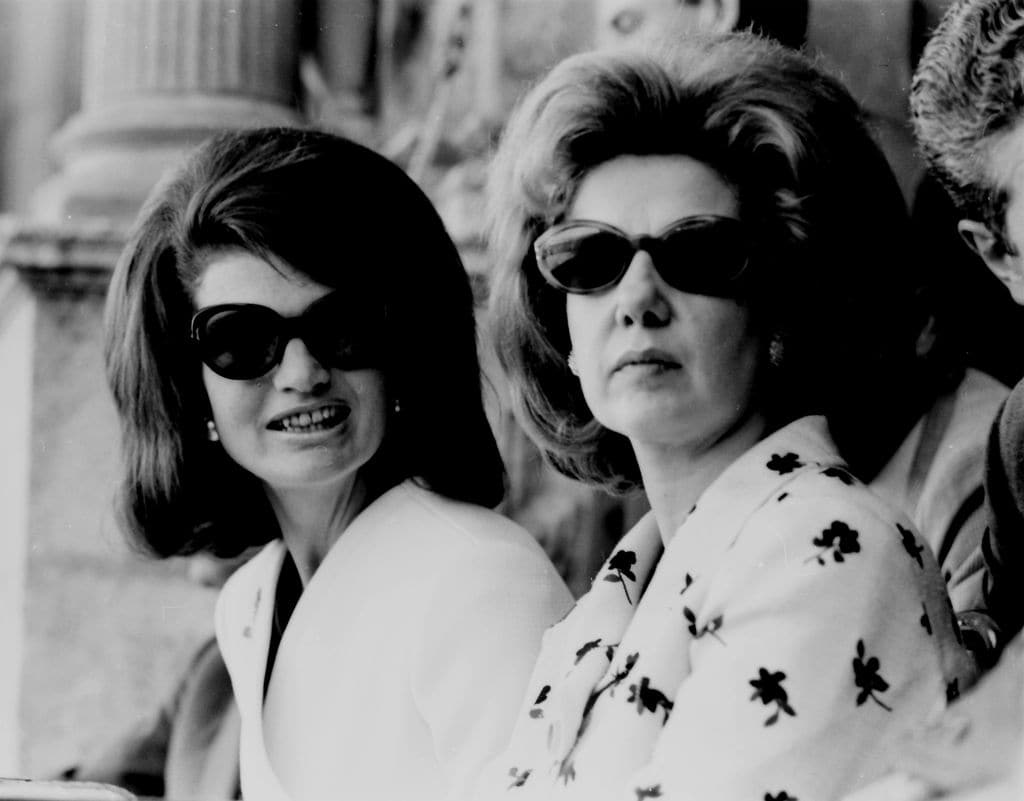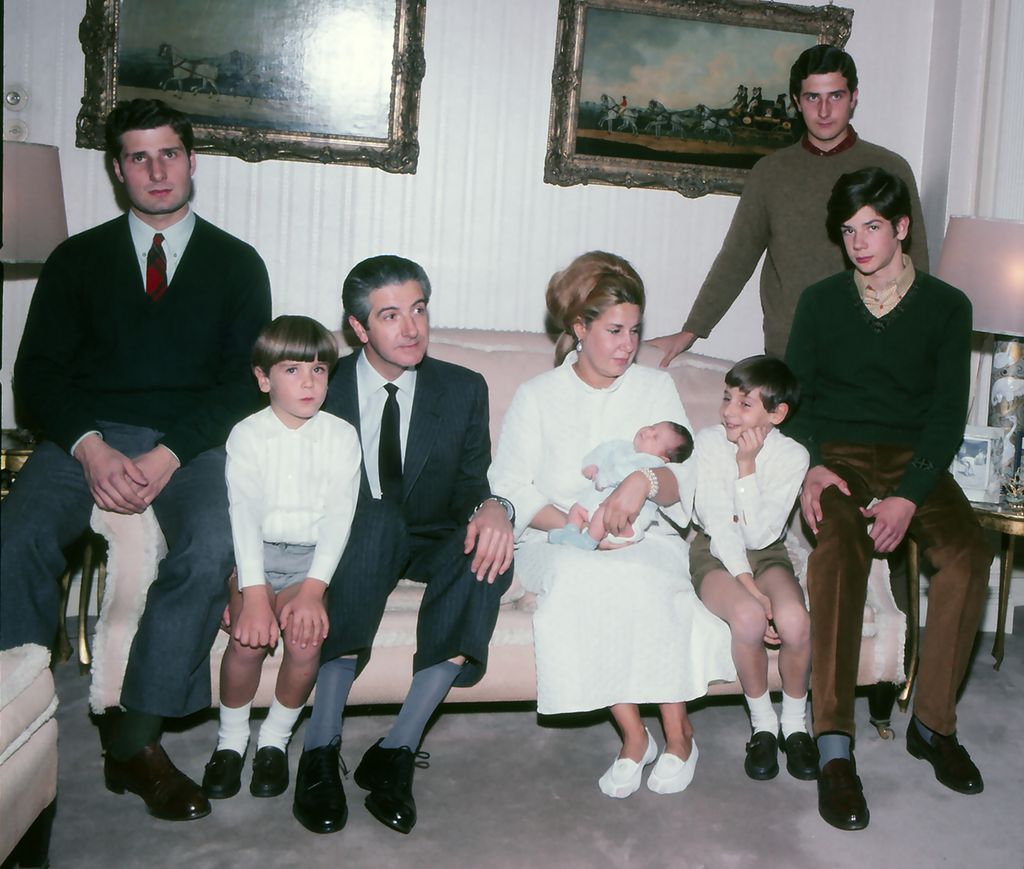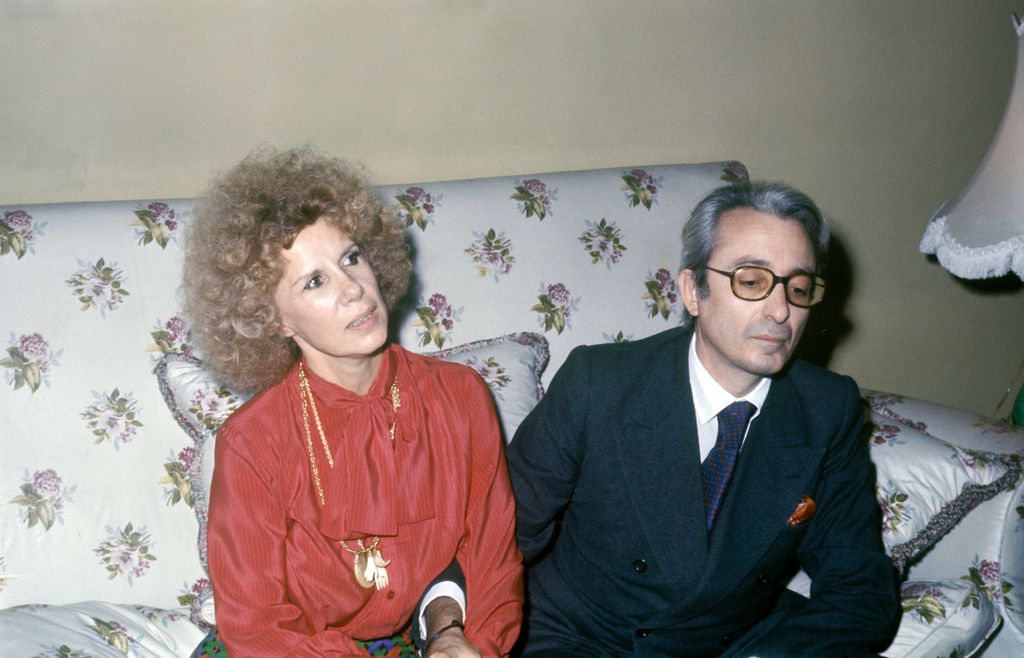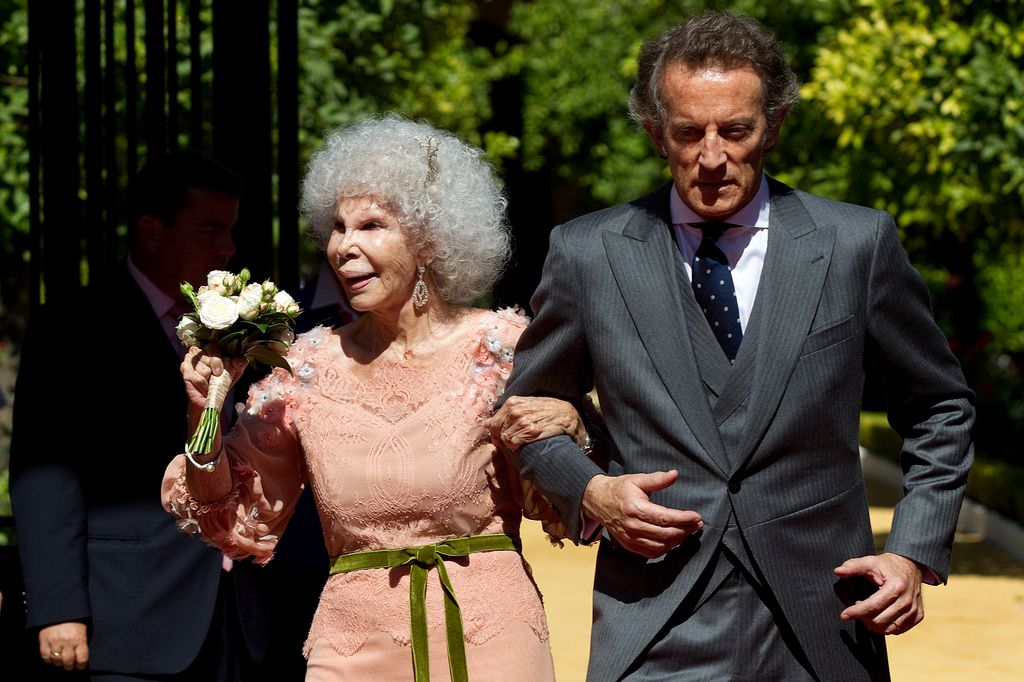Next November 20th will be exactly a decade since the death of Cayetana Fitz-James Stuart, the Duchess of Alba then, now and always. He closed his eyes for the last time his beloved Palacio de Dueñas, in Sevillea, at eighty-eight years old, surrounded by her children and her husband, Alfonso Díez Carabantes, the discreet, prudent and noble man who accompanied her during her last years. In 2014, the Duchess had already entered the hospital in June to undergo a routine check-up, but in November everything became complicated due to pneumonia that she was unable to overcome. If he lived the way he wanted, he died the same way. “By his own wish” he left the hospital on November 18 and He settled in his beloved Palacio de Dueñas. There, he was able to say goodbye in privacy not only to his children, but also to part of the history that is hidden within the walls of the Sevillian family refuge, erected since the 15th century and custodian of their lives and legends.
1. ‘Live and let live’
A lover of the beauty of life, Cayetana Fitz-James Stuart lived with intensity without letting old age win the battle of taking away her illusions. Until the end, he played, had fun, learned and felt with all his heart. He wanted to live, but he accepted with serenity that it was his time, even though he was capable of joking about it with spark and intelligence: “I plan to continue living,” he said on one occasion, “even if it is to see the frightened look on their faces when I tell them: ‘You I plan to bury everyone. That expression amuses me a lot.’”
2. From its kilometric name to its unfathomable titles
Take a breath, because we are going to remember the whole name of this unforgettable Spanish noblewomanGreat of Spain, who made history from the cradle: María del Rosario Cayetana Paloma Alfonsa Victoria Eugenia Fernanda Teresa Francisca de Paula Lourdes Antonia Josefa Fausta Rita Castor Dorotea Santa Esperanza Fitz-James Stuart y de Silva. If her name was kilometric, her noble titles deserved a place of honor in the Guinness Book of Records: five times duchess, eighteen times marchioness, twenty countess, viscountess, countess-duchess, constablesa, fourteen times Grandee of Spain. She respected and honored them, but she never felt that they defined her as a person.
3. Of his knowing how to always be there
One of the greatest curiosities aroused by his accumulation of titles was knowing, by protocol, who should genuflect in front of whom in case of encountering Queen Elizabeth II of England. It happened and it was seen. In 1988, when the Queen of the English made an official trip to Spain, a reception was held at the El Pardo Palace. During the hand kiss, the Duchess of Alba was captured bowing before the Sovereign. Cayetano Martínez de Irujo explained the matter in a program: “The two times that I know coincided with her, once the one in the image (referring to that of El Pardo) and another time I don’t remember where, of course (which (he bowed). It even bothered my mother that they said that. For her, a real family is a real family.”
4. Born under the influence of the full moon
She was not Queen, but she ‘reigned’ in the House of Alba. He was born in the Liria Palace, on March 28, 1926, under a full moon that predicted light and, why not, originality in his life. After his birth, his father, Jacobo Fitz-James Stuart y Falcó, 17th Duke of Albaexclaimed one enthusiast: “At last there is an heir to the dukedom!” The Duke had married María del Rosario de Silva y Gurtubay in 1920, but the couple had to wait six years to become parents. She was an only child, because María del Rosario, better known to friends as Totó, died very young, at thirty-three years old, after fighting persistent tuberculosis, which ended her life and prevented her from enjoying her only daughter. as both would have wanted. To avoid contagion, Cayetana de Alba was prohibited from accessing her mother’s room, who, on the other hand, spent long periods in Switzerland to treat her terrible illness.
5. ‘I, Cayetana’
In her memoirs, the Duchess dedicated long pages to remembering her childhood and her father. “I never heard from my father the slightest objection to my being a woman. Quite the opposite…” This fact made Cayetana always ahead of her time. She did not feel the need to prove anything, because as a child her father had given her security and confidence. “I don’t remember,” she continues, “at what moment I assumed that I was the 18th Duchess of Alba, the second woman – after my beloved Teresa Cayetana, the one in Goya’s portrait – to bear that title.” But he accepted his destiny without blinking and defended it with unfailing dignity.
6. From Picasso to Jackie Kennedy: eclecticism and art
When the heiress of the House of Alba was born, her father was meeting with none other than three intellectuals from the likes of Gregorio MarañónJosé Ortega y Gasset and Ramón Pérez de Ayala. Intellectuals and artists were always very well received in their palaces which, on the other hand, were in themselves art galleries of incalculable value.
The Duchess of Alba knew how to appreciate high culture and popular culture, a very Picasso mix. Precisely, in 2009, during an interview he gave to the newspaper ABC told an anecdote about the painter from Malaga: “Picasso wanted to paint me like Goya’s Maja, but my husband (Luis Martínez de Irujo) said no.” “And with the character you have, you didn’t protest?” they asked him. “I would have liked to, I was curious, but I didn’t really dare to go that far because of the criticism at that time. “Life has changed a lot today,” he replied.
On the walls of the residences of the Casa de Alba works hang that many museums around the world would like: Picasso, Greco, Zuloaga, Sorolla, Julio Romero de Torres, Goya, Fra Angelico, Rembrant and a long and impressive etcetera. There is also, in the Palacio de Dueñas, a work that draws powerful attention: it is a small watercolor that Jackie Kennedy painted during a visit he made in the sixties.
7. In love with love
A year before she died, the Duchess of Alba published a book titled What life has taught me. In it, this indomitable woman, who was married three times, and loved intensely, revealed: “Experience has taught me that the love of an older woman is just as strong as that of a young girl (…) I still remember the butterflies in my heart every Friday afternoon when I waited for the Ave to Santa Justa and Alfonso to come home to spend the weekend.”
The Duchess was married three times. With Luis Martínez de Irujothe father of her children, was married from 1947 to 1972, when he died of leukemia. Then it came into his life Jesús Aguirre y Ortiz de Zárateformer priest and editor of a prestigious label like Taurus, who worked to preserve the historical legacy of the Alba. Doña Cayetana always spoke of him as “the man of my life”, although unfortunately there were numerous disagreements between Jesús Aguirre and the Duchess’ six children. Although many thought that this relationship would be short-lived, they married on March 16, 1978 and enjoyed many years of happiness, although in the nineties they became estranged. He died in 2001 at the age of sixty-six, and the aristocrat was deeply affected.
Then it appeared in his life Alfonso Diezin 2008. Calm, slow, respectful, the Duchess found in him a friend, a confidant and companion. They married on October 5, 2011. She was eighty-five years old and remained true to her motto of “live and let live.” Time proved him right: Alfonso Díez took care of her with delicacy and love.
8. Loneliness
Brave, secure, confident… her Achilles heel was her fear of loneliness, as she said in her last book: “I hate loneliness. Sometimes it’s terrible. Jesús (Aguirre), my second husband, told me that I must have had a very bad time growing up because there were things I didn’t want to remember and I didn’t like being alone at all. (…) With Alfonso (Díez) I have fought for love, but also, I suppose, to be accompanied.” Honest to the core.
9. The importance of animals
In her childhood as an only child, with a sick mother, Cayetana (of all her names, her favorite along with Eugenia, the one she gave to her daughter) He loved his pony rides. Especially the ones he did about one named Tommy: “Tommy was a sign of how important animals, in general, would be in my life; and especially horses and dogs, although I must not forget my birds (…) At Alba, we have liked dogs for centuries (…) My father always had a dog that had the same name, Jacobo, a trait of humor and the phlegm that characterized him,” he wrote in his memoirs.
10. Genius and figure
Until the end, he maintained his unique style and his very free way of living. It wasn’t easy, and he knew it. It was simply her: “I usually get my way, although I don’t like to be proven right. I prefer to argue. I have a very bad temper, it’s true, but I’m not as difficult as people think.” The Duchess of Alba preserved her young spirit, curiosity and desire to live, until the end. With his way of dressing, he expressed this luminous message of “always forward, never backwards”: “I love current clothing. It is very boring to dress as an old lady. I like young people. The older ones ruin my morale, because they find everything wrong.”

